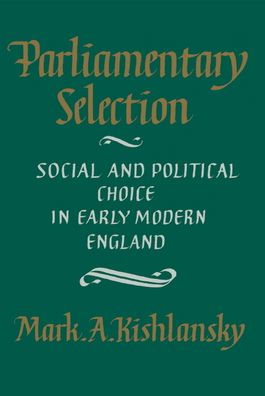Parliamentary Selection: Social and Political Choice in Early Modern England
Parliamentary Selection examines the process by which members of Parliament were chosen in the period between the reigns of Elizabeth I and William III. By focusing on the nature of the selection process, rather than on its results, Professor Kishlansky uncovers a fundamental transformation in assumptions about political behaviour in the early modern period. Until the time of the English Revolution, selection of members of Parliament was a social process dominated by concern about rank and status, personal honor, and community solidarity. County elites organized their selections to reflect the realities of their local social structures, accounting for the influence of the county peerage and greater gentry. Borough elites used local patrons, officeholders, and denizens for nominations to their places. In both county and borough the principle of parliamentary selection was non-competitive choice.
1111442665
Parliamentary Selection: Social and Political Choice in Early Modern England
Parliamentary Selection examines the process by which members of Parliament were chosen in the period between the reigns of Elizabeth I and William III. By focusing on the nature of the selection process, rather than on its results, Professor Kishlansky uncovers a fundamental transformation in assumptions about political behaviour in the early modern period. Until the time of the English Revolution, selection of members of Parliament was a social process dominated by concern about rank and status, personal honor, and community solidarity. County elites organized their selections to reflect the realities of their local social structures, accounting for the influence of the county peerage and greater gentry. Borough elites used local patrons, officeholders, and denizens for nominations to their places. In both county and borough the principle of parliamentary selection was non-competitive choice.
45.0
In Stock
5
1

Parliamentary Selection: Social and Political Choice in Early Modern England
276
Parliamentary Selection: Social and Political Choice in Early Modern England
276Paperback(New Edition)
$45.00
45.0
In Stock

Product Details
| ISBN-13: | 9780521311168 |
|---|---|
| Publisher: | Cambridge University Press |
| Publication date: | 09/26/1986 |
| Edition description: | New Edition |
| Pages: | 276 |
| Product dimensions: | 5.98(w) x 9.21(h) x 0.75(d) |
From the B&N Reads Blog
